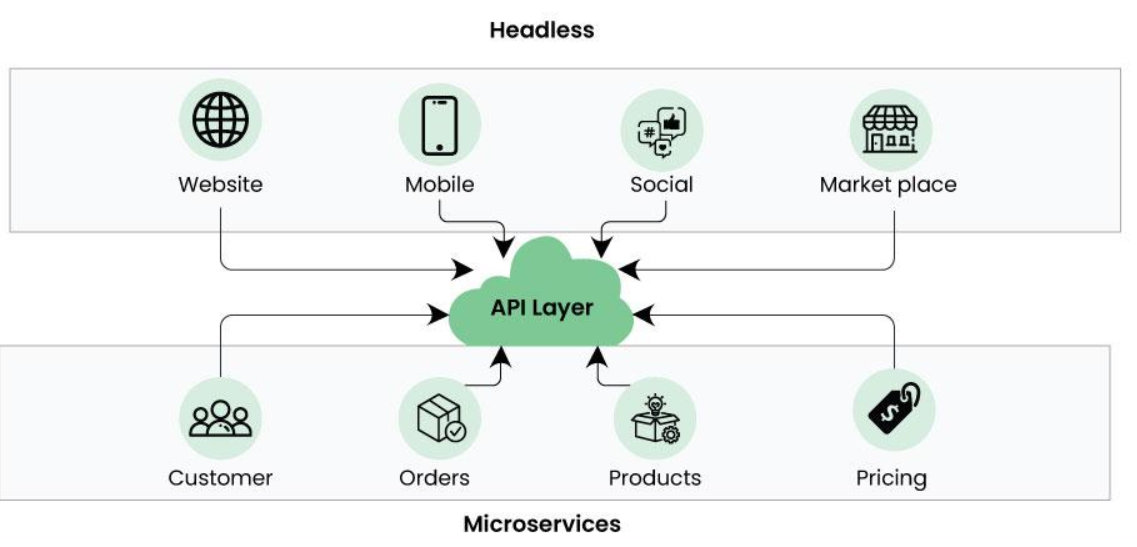An aging enterprise software solution can quickly become a drag on your organization. Whether it’s due to sluggish performance, recurring bugs, or an outdated interface, these issues directly impact team productivity and overall operational efficiency. In the era of digital transformation, relying on obsolete applications not only reduces effectiveness but also increases security risks and widens the gap with more agile competitors. As a decision-maker focused on ROI and the long-term viability of your systems, it’s essential to recognize the warning signs that indicate it’s time for software modernization.
In this article, we highlight ten clear signs that your business software may be reaching its limits. For each, we explain why it matters and how to address it. You’ll also discover how Edana’s approach—tailor-made open-source development, hybrid integration, and a commitment to sustainability—enables secure, scalable modernization that strengthens your competitiveness. Make sure your enterprise software remains a strategic asset, not a liability, by checking that none of these red flags apply to your organization.
Declining Performance and Frustrated Users
Sluggish response times, frequent crashes, and an outdated interface are early indicators that your software has reached its limits and is undermining your teams’ productivity.
If every action in your application comes with a long wait—or if your employees need to restart the tool several times a day—the verdict is clear: your software is slowing the business down. A system as unpredictable as an old office printer—slow, temperamental, constantly needing to be “rebooted”—can easily frustrate even the most patient team members.
1. Endless Response Times and Recurrent Bugs
Obsolete software often reveals itself through abnormally long loading times and unexpected crashes. When your teams spend more time waiting than working, it’s a strong signal that an upgrade is overdue. These slowdowns not only hamper productivity but can also result in data loss or critical processing errors.
For instance, a Swiss industrial company experienced hours of production downtime due to a legacy management software crash—a costly disruption that could have been avoided with a more modern and stable solution.
2. Outdated and Unintuitive User Interface
Beyond raw performance, user experience is a critical factor. Confusing menus, unintuitive navigation, or outdated design all hinder user adoption. If your employees complain more than they click, or constantly invent workarounds just to perform simple tasks, your software’s ergonomics are no longer suitable. Poor UX leads to frustration and mistakes, ultimately reducing operational effectiveness.
Enterprise software should support your teams’ work—not make it harder. When this is no longer the case, modernization becomes essential to restore user engagement and productivity.
3. User Dissatisfaction and Loss of Internal Buy-In
Negative feedback from your teams is a warning sign you can’t ignore. Do employees regularly complain about the tool? Do they revert to older systems or Excel files on the side? If the software is so rejected that users demand “the old version” or seek unofficial alternatives, this signals a serious issue. Such disengagement can lead to hidden processes outside IT’s control—or even higher turnover, as tech-savvy talent leaves an outdated work environment.
Studies have shown that unreliable systems reduce productivity and lower employee morale, resulting in significant financial losses. To avoid this outcome, it’s time to consider a redesign that delivers a modernized user experience—one that re-engages your teams and supports their performance day to day.
Limited Functionality: No Integration, Mobility, or Automation
Outdated software also reveals itself through its inability to connect with other tools, provide mobile access, or automate repetitive tasks—leading to inefficient and error-prone operations.
Modern businesses operate in a diverse digital ecosystem where applications must exchange data in real time. If your current solution functions in isolation, without seamless connectivity to your other systems (ERP, CRM, e-commerce platform, etc.), or forces you into tedious manual reentry, it’s a clear sign of technological stagnation. Likewise, in today’s mobile-first world, lacking access to your tools outside the office is a serious handicap.
4. Lack of Integration and Manual Data Transfers
Are you still copying and pasting data between applications due to the absence of connectors or APIs? This kind of outdated workaround—reminiscent of the early 2000s—suggests your tools don’t integrate effectively. Beyond wasting valuable time, duplicate data entry increases the risk of errors (missed updates, database inconsistencies, and so on).
For example, a logistics company was using legacy software that didn’t communicate with its accounting system. Employees had to export Excel files every week and reimport them manually—a time-consuming and unreliable process.
In contrast, modern enterprise software integrates natively into your application ecosystem or via custom connectors, eliminating these information silos.
At Edana, we advocate for open, interoperable architectures that can communicate with both your current and future applications, whether internal or third-party.
5. Limited Access and No Mobile Capabilities
If your application only runs within the company’s local network—or requires a cumbersome VPN to access remotely—it’s clearly no longer aligned with today’s workflows. Decision-makers and employees alike need to access data on the go, via mobile devices or a simple web browser. The absence of cloud or mobile capabilities is a clear sign of obsolescence. In contrast, competitors equipped with modern SaaS tools enjoy far greater agility for remote work, mobile sales teams, and cross-site collaboration.
Failing to modernize your software means missing out on the flexibility and responsiveness current technologies offer. A redesign might involve migrating to a web-based or hybrid architecture, making your applications securely accessible from anywhere. The result? Business continuity, higher productivity, and user satisfaction, as your teams finally gain 24/7 access to the tools they need.
6. Manual Processes and Lack of Automation
Outdated software also reveals its shortcomings in its inability to automate repetitive tasks. If your teams still perform operations manually that the system could handle—like transferring data between modules, generating reports, or re-entering information already stored—it’s a sign that your tool isn’t leveraging the potential of modern technology.
This lack of automation slows down business processes and ties up your workforce with low-value tasks. In contrast, a modern solution should offer automation features (workflows, scripts, machine learning, etc.) that free up your team’s time for more strategic work.
Take the case of a service-based SME where the legacy software lacked workflows to process client requests. Staff had to track everything via email and spreadsheets. After modernizing the platform, streamlined digital processes replaced the manual steps—cutting response times and minimizing the risk of oversight.
In short, a lack of automation is a clear warning sign: it indicates that upgrading your software could deliver immediate gains in both productivity and reliability.
{CTA_BANNER_BLOG_POST}
Rising Costs and Lack of Scalability
If your software demands increasing maintenance resources without evolving alongside your needs, it’s a serious sign of obsolescence that directly threatens your ROI.
Over time, legacy systems tend to become more expensive to operate while delivering less and less value. Meanwhile, your business is changing: growing user bases, new feature requirements, expansion into new markets, evolving processes… A rigid, hard-to-adapt application may slow down this evolution—or worse, force teams to bypass its limitations with external tools. This growing mismatch between business needs and software capabilities is a clear indicator that modernization should be considered before your system becomes both a financial and operational liability.
7. Skyrocketing Maintenance Costs
Outdated software often comes with an increasingly heavy maintenance bill. Fixes become more frequent, vendor support (if still available) becomes costly, and even minor updates demand significant effort. Studies show that companies spend between 60% and 80% of their IT budgets just keeping existing systems running. In other words, up to 4 out of 5 CHF go into maintaining the status quo—at the expense of innovation. Holding onto a legacy application is not a cost-saving strategy; in fact, these hidden costs drain resources that could be better allocated to high-value initiatives.
For example, one of our clients in the banking sector found that each bug fix in their legacy software required a full team for several weeks due to the lack of documentation and scarce internal expertise—a luxury no IT department can afford in the long run. By modernizing with Edana using a modular architecture and well-established open-source technologies, the client was able to reduce maintenance costs and regain control over their IT budget.
It’s also worth noting that a well-designed modern solution can cut infrastructure costs significantly. Migrating aging on-premise servers to the cloud, for example, can reduce energy consumption by up to 85%—lowering operational expenses while contributing to sustainability goals and CSR commitments, alongside financial gains.
8. Difficulty Adding New Features or Scaling Up
Your business is evolving—but your software is stuck in the past. If implementing even the smallest new feature to meet a business need takes months (when it’s possible at all), or if your application hits its limits as soon as user numbers or data volumes increase, it’s a sign the underlying technology is no longer fit for purpose.
Enterprise software must continuously adapt to change—whether it’s regulatory updates, evolving processes, or integration with emerging tools (AI, IoT, etc.). Technological obsolescence is often revealed by this very lack of flexibility.
For example, an insurance company found it was unable to connect its legacy platform to APIs from innovative fintech partners, missing out on opportunities to launch new services for its clients.
Similarly, some older proprietary systems can no longer be extended or customized—forcing the business to adjust its processes to fit the software, instead of the other way around. That’s a clear indicator that a tailor-made redesign is needed. At Edana, we favor modular, scalable architectures that grow with your business. By using robust, standardized technologies, we ensure your tools remain flexible and future-ready—able to adopt tomorrow’s innovations instead of being disrupted by them.
9. Obsolete Technology and Skills Shortage
A commonly underestimated sign of obsolescence is the growing scarcity of skills required to maintain your software. It may have been developed in a rarely used language (e.g., COBOL, Delphi, VB6) or rely on an outdated database. As a result, finding developers who are proficient in these technologies becomes increasingly difficult and expensive—leading to longer maintenance cycles and higher risks if a key internal expert leaves. When even the smallest bug fix requires hunting down a rare specialist or paying exorbitant external fees, it’s time to consider migrating to a modern tech stack.
By adopting widely-used open-source technologies, you reduce dependence on a handful of individuals while benefiting from an active community and regular updates. Edana’s approach is specifically designed to avoid technology lock-in: we integrate and build solutions where the code is as much yours as possible—often 100%—using modern, sustainable open-source frameworks. This ensures the long-term maintainability and resilience of your applications.
Compromised Security and Competitive Disadvantage
From unpatched vulnerabilities to faster-moving competitors, outdated software exposes your company to major security risks and a loss of market position.
In a world where cyberattacks are multiplying and digital is a key differentiator, neglecting to update your software is like leaving the door wide open to incidents—while your competitors keep moving forward. A forward-thinking CIO must assess whether their software ecosystem still holds up in two critical areas: cybersecurity and competitive advantage.
10. Security Vulnerabilities and Non-Compliance
Legacy software that’s no longer regularly updated poses a real security threat to your organization. Hackers love unpatched systems, as they often contain known vulnerabilities that can be exploited remotely. In fact, 60% of companies affected by data breaches admit the breach originated from a known vulnerability for which a patch already existed.
Failing to modernize your software can therefore lead to severe incidents—data theft, ransomware, downtime—all of which can be far costlier than a planned upgrade. And that’s not even accounting for compliance: outdated applications often fall short of current security standards and regulations (such as the GDPR and Switzerland’s nLPD), potentially putting your company at legal and reputational risk. By modernizing your software with up-to-date technologies and applying secure development best practices, you strengthen your overall cybersecurity posture.
At Edana, we build robust security protocols into every solution from the ground up and maintain a high level of compliance—especially through the use of proven, community-audited open-source components. Updating your applications means shutting the door on intrusions and protecting both your digital assets and your clients’ trust.
11. Falling Behind the Competition (Bonus)
As a bonus, here’s one more red flag—this time from a strategic perspective. If your direct competitors are gaining in efficiency or market share thanks to better digital tools, it’s risky to stand still. Obsolete software often leads to less optimized internal processes, slower response times to customer requests, or an inability to launch new digital services—all areas where agile competitors will outpace you.
For example, a retail company struggling to launch online sales due to a legacy system may quickly lose ground to omnichannel-savvy rivals. Likewise, if your analytics dashboards are limited by outdated tools, your competitors are likely making faster, better decisions based on real-time data. In short, sticking with legacy software is essentially choosing to lose competitiveness day after day.
Modernization, by contrast, puts you back in control: by rethinking your applications with Edana, you can not only catch up, but start innovating—through AI integration, enhanced mobility, better customer services, and more—and regain your leadership position. It’s a high-impact strategic investment: a modernized enterprise platform supports your competitive edge long term, while a legacy system only forces you to react instead of leading the change.
Conclusion: Take the Lead on Modernization
By objectively assessing your software landscape through the lens of these eleven warning signs, you can determine whether your organization is at risk of digital stagnation—or worse, breakdown. Declining performance, limited functionality, rising costs, security gaps, user dissatisfaction, or falling behind competitors—each symptom is a call to action. Modernizing your enterprise software isn’t just a technical task; it’s a strategic investment to safeguard the resilience, security, and competitiveness of your organization.
At Edana, our expertise in custom software development and IT ecosystem integration enables us to design scalable, high-performance, and secure solutions tailored to your business needs and ROI goals. Our approach focuses on building the new with the sustainable—crafting hybrid ecosystems that connect seamlessly with your existing systems while integrating the most relevant modern technologies (cloud, APIs, improved UX, etc.). All of this is delivered with a commitment to CSR best practices for responsible and future-proof digital infrastructure.
Don’t let outdated software hold your business back. It’s never too late to explore your options—whether it’s an audit of your current systems, a partial or full redesign, or a migration to open technologies. With a trusted partner at your side, you can turn this challenge into an opportunity and breathe new life into your digital tools.
Interested? Let’s talk about your modernization goals with our experts.



















